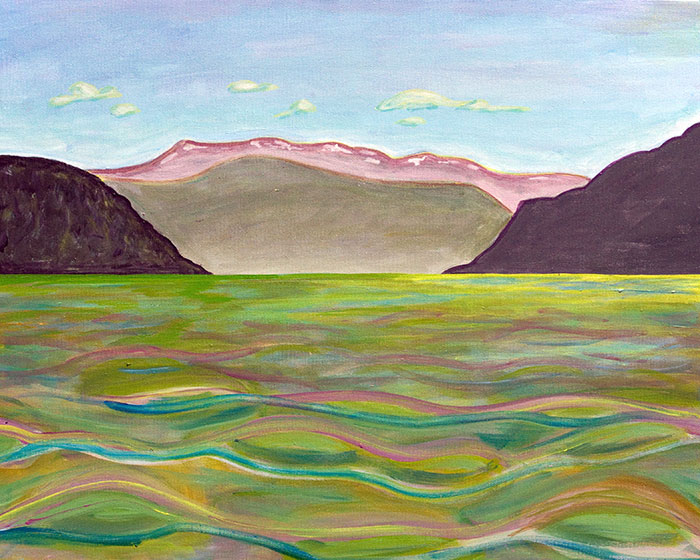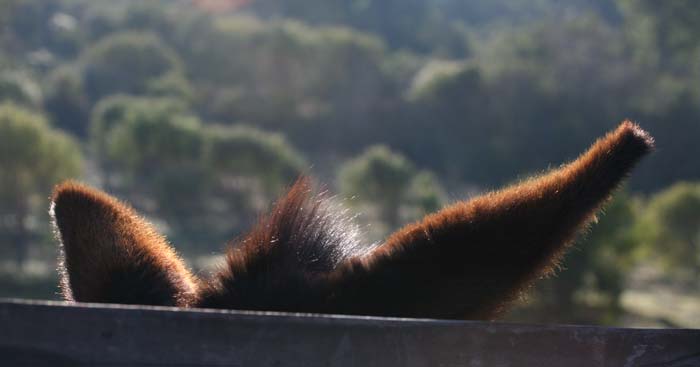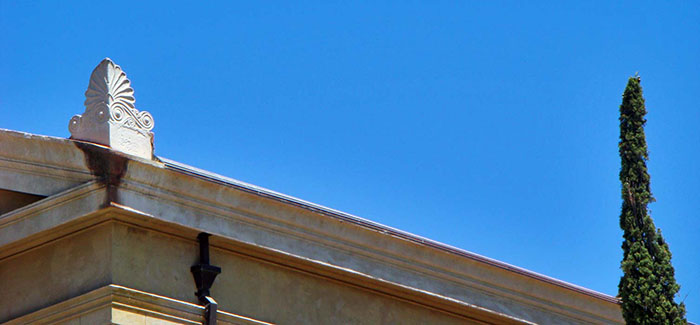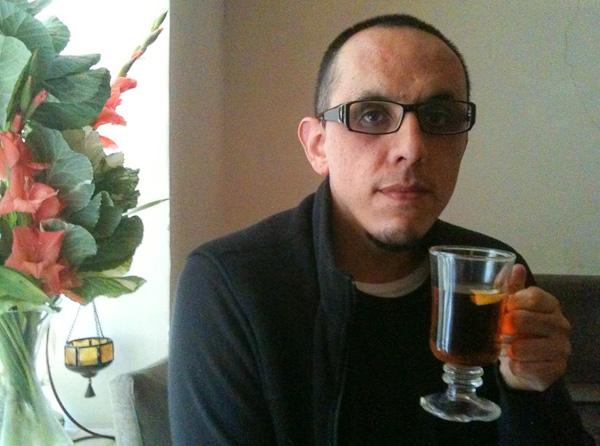
Hotels
by Alberto Chimal

In Reykjavik, there is a study group that specializes in the mysterious work of Juan Cruz de la Piedra, whom members call (in Spanish) “El Arquitecto del Misterio,” the Architect of Mystery. They are miracle workers, soothsayers, haruspices, and there are even one or two architecture graduates from the University. Their meeting place is a clandestine hall on Safamýri Street, presided over by a bronze bust of either Gunnar Gunnarson or Loftur the Wizard (they cannot agree which). In any case, they say it has the power to speak seven times a year, to announce disastrous or wondrous events.
Horatio Kustos, the renowned explorer, visited them last summer and told them of his many adventures with “Don Cruz”, as Kustos calls him. He also gave a slide lecture on the various hotels Don Cruz designed, which are considered among the strangest in the world.
1. The Water Inn is in the middle of the Indian Ocean, on the Tropic of Capricorn, some twenty kilometers from the coastal village of Ianantsony in Madagascar. It is a beautiful four-story Art Deco pastiche with a total of twenty-six rooms, but none of this can be seen at first glance. The building was erected underwater and stays submerged twelve or thirteen meters. The Inn is further hidden thus: to get a room, you have to take a boat out to open sea and find the reception area, which is really a pair of old fishing boats anchored just above the building and badly bound to each other.
Once the paperwork has been completed, each guest must dive on his own, without any equipment at all, to find the access hatch to the hotel proper, and the management will not be held responsible for anything…
“But once inside, once you have evaded the sharks and if you are able to enter successfully, oh, what an awesome sight! You find every movement much easier since you no longer have to hold your breath because in fact you are breathing healthy sea water. Inside the hotel, men turn into tritons and women, mermaids…”
“That’s not true,” replies an obtuse Icelander graduate.
“Well, no, not exactly,” says Kustos. “I call them that out of convenience. Men become these long things with tentacles and women are like jellyfish, transparent, like diaphanous…”
Seduced by the comforts of the Inn –delicious food, sleep and love without beds in a weightless environment, different sensations, music from instruments that can only be heard underwater– a considerable number of guests decide not to surface again and instead choose to go even deeper.
“But not me,” says Kustos. “Just imagine… If I had, I wouldn’t be here with you now.”

2. The Platonique Hotel, situated in downtown Athens, is like many of the concrete and crystal prisms that fill today’s cities, but at the same time it is more –that is to say, more prismatic– than any of them. While he shows his slides, Kustos recalls the great effort he had to make to find the hotel, whose shape is pure and without any distinctive features, so that it is not retained in one’s memory and always threatens to fade into the other buildings surrounding it. He also recalls the corridors, which are horizontal prisms; the beds in his room, a wide and low prism; and the almost cubic prisms that serve as chairs. Everything was made of a material that was neither hot nor cold, neither hard nor soft, without metallic shine or stony opacity or organic unevenness. Light came out of slightly more brilliant prisms. In the bathroom, there were several hollow prisms through which all impure material rapidly slid, to be lost in oblivion.
In any case, his was a standard room. “What I wouldn’t have given,” Kustos says now, “to see the luxury rooms, which are the ones that actually give the hotel its name. The cheaper ones are those with tetrahedrons, that is, everything in them is made up of tetrahedrons, but I couldn’t afford even one of those.”
“How can one sleep on a tetrahedron?” somebody asks.
“As one would on a cube…”
“Yes, because, on an octahedron…”
“Or an icosahedron!”
Following the hierarchies of the ancient doctrines, the Presidential Suite at the Platonique is consecrated to the dodecahedron, the regular polyhedron associated with the Fifth Essence, but it is so expensive that no one has yet been able to spend even a single night in it.
3. When it is time to speak of the Niente Hotel, Horatio Kustos remembers having laughed at its owner:
“Of course I’ll talk about it,” he said. “Who’s going to stop me? You?”
But on showing his slides of the hotel, he discovers they are all blank. Nothing can be seen and, worse still, the whiteness is not just a color but a deep, extremely vast void that captures your eye and seems to want to hold it forever, to absorb it and absorb all thoughts and sensations, words, the very body of whoever looks at it… The same thing happens with the hotel façade…
“Let’s go on to the next one,” Kustos says and he presses the forward button on the projector several times.
“This wouldn’t happen if he learned how to use PowerPoint,” whispers the other architecture graduate.
4. The Fear Hotel is found inside what seems like an enormous abandoned studio in Los Angeles. It is insulated from outer light at all times and sits in the middle of a plain peppered with artificial trees and cardboard headstones. Seen from the north it looks like the Bates Motel, the one in that Hitchcock movie, but from the south it looks more like Dracula’s Castle, and from other angles, like other famous settings from horror films.
“Don Cruz is very clever with façades.”
“And I suppose,” a soothsayer says, “it is run by people dressed up as monsters?”
“In fact, they are monsters,” Kustos says. “The werewolf, the swamp thing. The serial killer, the zombie… They are all made out of cardboard, steel rods, wood, molding clay, but they move and work quite well. And again: if you look at them from this angle, they’re one thing, but if you look at them from this other angle…”
In addition to the usual amenities, the Fear Hotel operates as a “haunted house” during the day, whether the guests like it or not. Screams can be heard at all hours, which speaks volumes about the employees’ perseverance.
“And what for?” the soothsayer asks.
“They say the hotel used to be in I don’t remember where…, before movies were invented. It looked different and was staffed by different employees. Don Cruz was asked to redesign it, and it seems that he will soon make a newer version, too,” says Kustos (now).
“It is a temple of fear,” said the hotel manager (when he spoke to Kustos).
“There will always be a house for terror to live in and feed off the fear of willing souls,” said a being , thousands of years ago, dressed in jet black clothes and as high as the sky. But neither Kustos nor the Icelanders know of this.

5. The Janusjanus Hotel in Szolnok, Hungary, is so called because it is built on the magical principle of “multiple repetition.” It only has one room, which is exceedingly expensive because it is close to three hundred meters square, and it is furnished in the same sumptuous luxury as the best hotels in Hong Kong or Dubai; on top of it, there is a half-kilometer high steeple made out of iridium and molybdenum “to summon the Potencies.” But whoever stays there –without needing more than a simple invocation to the Terrible Powers– will be attended by an efficient and obsequious troop of duplicates of himself.
“When I went, I was received by a bellboy called Horatio, who helped me unpack, while Horatio the steward was serving me a drink, and Horatio the waiter was taking my order to give to Horatio the cook…”
“We got it,” complained a miracle worker. “Each one comes from a different universe, from another level of reality…”
“The chambermaid was also called Horatio, even though she was a woman and quite attractive,” interrupts Kustos. “She came from a world closer to the norm than most, that is, in which Horatio is a woman’s name.”
On the last night of his trip, Kustos was able to go down to the restaurant to be attended by a dozen of Horatios Kustos engaged in satisfying all his whims. He later went to the bar to hear the band – which was really good – with Horatio at the piano, Horatio at the guitar, and Horatio on the tenor saxophone, all accompanying Horatio, a singer even more beautiful than the chambermaid.
“‘Boop boop a doop,’ she sang.”
“Just a second,” says the miracle worker. “A moment ago you said that the girl called Horatio, I mean the other one…, was from a world ‘closer to the norm than most’?”
“Yes!” Kustos replies. “I was also very surprised. She told me, in fact… Our world uses names in a very unusual name. For example, I don’t know… What is your name?”
The miracle worker gives his name.
“Wow… I’d better not say. Almost everywhere that name is not used for…”
“For what!”
“For humans.”
“How dare you!”
“It wasn’t me!”
“Lout!”
“It’s not my fault!” And so it goes, in the night lit up by the Iceland summer. Meanwhile, at the back of the hall, the bust of Gunnar Gunnarson or Loftur the Wizard opens its metal mouth unnoticed: the coming day will be interesting.
About the Author

I was born in 1970. I’ve published a number of short story collections and a novel in Mexico, and most of them are similar to what Bruce Sterling has called “slipstream fiction”: they deal with the fantastic (I think) in somewhat odd ways. I teach literature and creative writing. Also, as I studied both computer engineering and comparative literature (long and weird story), I’ve been working on Internet-based writing and literary projects since the nineties. I’ve won several awards in Mexico, mostly for single and collected short stories. I live in Mexico City with my wife, Raquel, and a cat named Primo. My website is here.
Post a comment on this story!